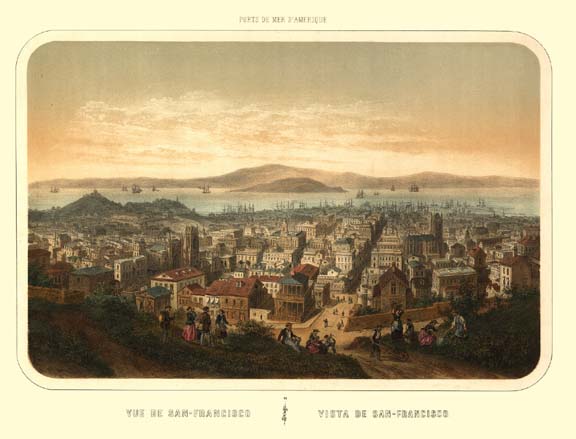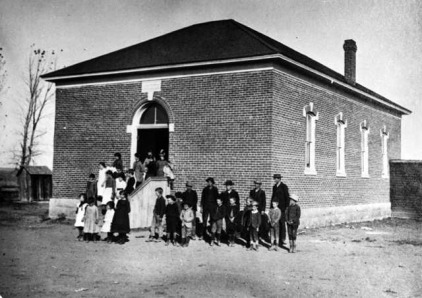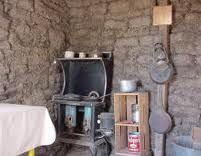Post by Doris McCraw, writing as Angela Raines
 |
Hazy view from Pikes Peak
photo property of the author |
Glimpses by Helen (Hunt) Jackson
As
when on some great mountain-peak we stand,
In
breathless awe beneath its dome of sky,
Whose
multiplied horizons seem to lie
Beyond
the bounds of earthly sea and land,
We
find the circles space too vast, too grand,
And
soothe our thoughts with restful memory
Of
sudden sunlit glimpses we passed by
Too
quickly, in our feverish demand
To
reach the height,--
So
darling, when the brink
Of
highest heaven we reach at last, I think
Even
that great gladness will grow yet more glad,
As
we, with eyes that are no longer sad,
Look
back, while Life's horizons slowly sink,
To
some swift moments which on earth we had.
From
the book"Poems" by Helen Jackson
Little
Brown and Company 1908
First
appearance in publication September 19, 1872, New York Independent
 |
Colorado Springs from Pikes Peak
photo property of the author |
The thing I love about the poetry of Helen Hunt Jackson is the musicality
it has when it's read aloud. Not read as one usually reads poetry, with
the breaks and breaths at the end of the line, but read as prose. If
you read this poem aloud, pausing at commas or reading through the
complete thoughts the true beauty of this piece comes through. When
you read this piece, read it through more than once to get the feel
for what Helen is trying to say. Try different combinations of
breaths and thought to combine and see what you get. The beauty is, each time something
different arises out of the different combinations. I believe that
true poetry never has the same story, the same meaning twice. You can
read it at different times and it will touch a different chord each
time you read through the poem.
Sometimes
when I am reading, I try to hear the voice of a favorite actor or
singer saying the words. Then, of course, I try using different voices
or even singing the words. It is a way to keep learning, hearing, and
understanding.
As
you read this or any poetry, keep an open mind and heart. This is the poetry that was popular during the time period we write about. Helen was
favorably compared to many of the poets of her time. According to
stories, she was actually considered the best, male or female. I
always found it interesting that Helen was so popular during her
lifetime. It was so much so that she was able to make a living as a
writer. Emily Dickinson, her childhood in Amherst, on the other
hand, did not become popular until her death. Now the tables have
turned and Emily is the better known of the two. Each had their own
style, and each wrote beautiful pieces of work.
There
is a story that Helen wanted Emily to publish her work, but Emily was hesitant. Helen persisted and there is an anonymous poem written
by Emily that Helen had a hand in getting published. Helen suggested that Emily make her
the executor of the poems so that she could make sure they were
published in case of Emily’s death. Unfortunately, Helen preceded
Emily by nine months and three days.
The
next time you are looking for something do to, search online for some
of Helen's poetry, or better yet, find a book of her poems, and start
reading. To me, the gift of the poet is the
joy of finding something new every time I read their work. Give
poetry, especially Helen’s, a try. It never hurts to try something
new and different. Reading the older writers doesn’t make
it good or bad, it is what you receive from the gift of the author.
To me, that is why poetry will never grow old.
I challenge you to read a poem and then write one of your own or give cento poetry a try. For those who don't know, Cento poetry is taking lines from other poems and using them to create something new.
Of course, I couldn't let a post pass without mentioning how the classics play into my own writing. In my latest 'Lockets & Lace' novel, "The Outlaw's Letter", my heroine is passionate about Homer's Odyssey. Here is a short excerpt:
To Hetty's mind, Boggs was the worst kind of human. He seemed to take
pleasure in tormenting her, knowing she couldn't leave; the ropes
securing her had seen to that.
"Mighty
pretty rainbow," his voice whispered in her ear. "I always
loved rainbows."
"I
don't believe you," Hetty spat. "How could someone who does
what you do…"
"See,
you judge so harshly," Boggs interrupted, adding, "Just so
you know, I have you here so Grant will see you, so he knows…"
"Knows
what? How do you know he's coming?"
Boggs
didn't make sense. There was no convincing him that holding her
hostage was a waste of time.
Hetty
closed her eyes, shutting out the vision of freedom. What would
Odysseus do in this situation, the hero she revered from Homer's
Odyssey, Hetty wondered. "Who am I kidding, he would not be tied
up in a mountain cabin."
She
must've spoken out loud for the voice continued in her ear. "You
never know, Grant could find himself in your situation, except I've
found out he's worth a lot more dead."
At
hearing Boggs' statement about Grant being worth more dead, Hetty
started to panic. The more Boggs said, the more frightened Hetty
became.
Doris Gardner-McCraw -
Author, Speaker, Historian-specializing in
Colorado and Women's History
Angela Raines - author: Where Love & History Meet
For a list of Angela Raines Books: Here









































.jpeg)














